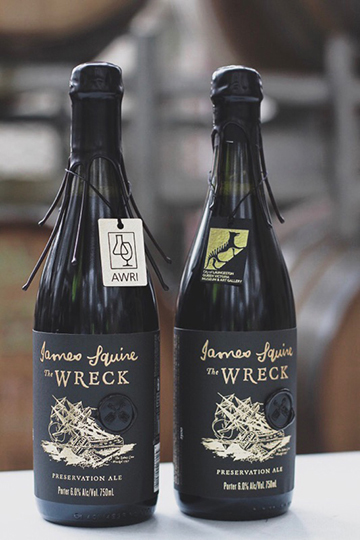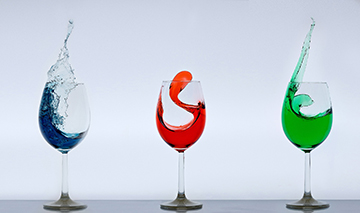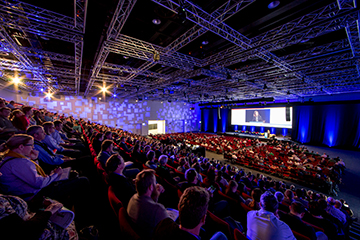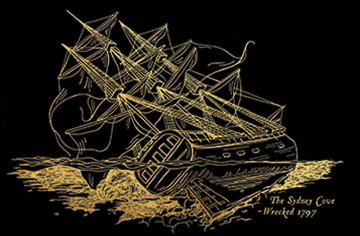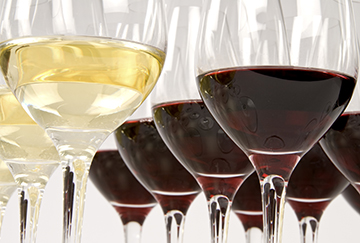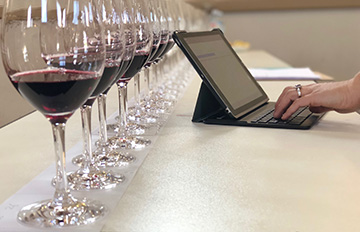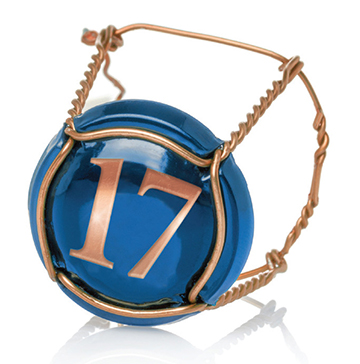2000th paper features secrets of stone fruit flavour
The AWRI is pleased to announce that it has recently published its 2000th article since its founding in 1955. The 2000th paper, published in the Journal of Agricultural and Food Chemistry describes cutting-edge research on the peach and apricot flavours found in white wines. Conducted in a collaboration between the AWRI, the University of South Australia and the University of Bordeaux in France, this research combined sensory analysis, chemical analysis of wine volatiles and painstaking reconstitution experiments to identify the most important compounds involved in stone fruit flavours.
A key finding was that a combination of monoterpene compounds, previously known to contribute citrus and floral characters, were also in fact the most important contributors to apricot aroma in white wines. This work formed a major part of AWRI Senior Scientist Tracey Siebert’s PhD studies and Tracey is congratulated on having recently had her PhD thesis accepted as well as being lead author on the 2000th paper.
The full paper detailing these results is accessible via the AWRI library:
Siebert, T.E., Barker, A., Pearson, W., Barter, S.R., de Barros Lopes, M.A., Darriet, P., Herderich, M.J., Francis, I.L. Volatile compounds related to ‘stone fruit’ aroma attributes in Viognier and Chardonnay wines. J. Agric. Food Chem. 66(11): 2838-2850; 2018. |
Order the latest AWRI staff publications online
Accessing the latest AWRI publications is easy. Visit the AWRI Publications web page to:
- View the 10 most recent AWRI staff publications and order the articles online from the AWRI Library
- Search the staff publications database
- Read the full-text of ‘Technical Notes’ from Technical Review (PDF format)
- Read the full-text of ‘AWRI reports’ published in Wine & Viticulture Journal (PDF format).
A list of AWRI publications published since the last eNews is included below:
1993 Gawel, R., Schulkin, A., Smith, P., Kassara, S., Francis, L., Herderich, M., Johnson, D. Influence of wine polysaccharides on white and red wine mouthfeel. Wine Vitic. J. 33(1): 34-37; 2018.
1994 Essling, M. Ask the AWRI: Spray drift. Aust. N.Z. Grapegrower Winemaker (650): 34-35; 2018.
1995 Godden, P. Sooty mould winemaking trial: the impact on processing, composition and sensory attributes of Shiraz wine. Wine Vitic. J. 33(2): 19-24; 2018.
1996 Capone, D., Pearson, W., Bindon, K., Kassara, S., Solomon, M., Bey, L., Francis, L., Herderich, M., Johnson, D. What makes red wine green? Wine Vitic. J. 33(2): 32-35; 2018.
1997 Krstic, M., Porter, I., Plozza, T., Dunne, K., Herderich, M., Culbert, J., Zhang, P., Bui, J. Managing the impact of smoke taint in the Australian wine industry. Wine Vitic. J. 33(2): 47-49; 2018.
1998 Teissedre, P-L., Stockley, C., Boban, M., Gambert, P., Alba, M.O., Flesh, M., Ruf, J-C. The effects of wine consumption on cardiovascular disease and associated risk factors: a narrative review. OENO One 51(1): 67-79; 2018.
1999 Siebert, T.E., Barker, A., Barter, S.R., de Barros Lopes, M.A., Herderich, M.J., Francis, I.L. Analysis, potency and occurrence of (Z)-6-dodeceno-γ-lactone in white wine. Food Chem. 256: 85-90; 2018.
2000 Siebert, T.E., Barker, A., Pearson, W., Barter, S.R., de Barros Lopes, M.A., Darriet, P., Herderich, M.J., Francis, I.L. Volatile compounds related to ‘stone fruit’ aroma attributes in Viognier and Chardonnay wines. J. Agric. Food Chem. 66(11): 2838-2850; 2018.
2001 Siebert, T.E., Barter, S.R., de Barros Lopes, M.A., Herderich, M.J., Francis, I.L. Investigation of ‘stone fruit’ aroma in Chardonnay, Viognier and botrytis Semillon. Food Chem. 256: 286-296; 2018.
2002 McRae, J.M., Schulkin, A., Dambergs, R.G., Smith, P.A. Effect of white wine composition on protein haze potential. Aust. J. Grape Wine Res. doi: 10.1111/ajgw.12346: 1-6; 2018.
2003 Dry, P. Mencia. Wine Vitic. J. 33(2): p. 59; 2018.
2004 Cowey, G., Ranjitkar, S. Tooth care for wine professionals: protect your teeth against occupational hazards. Wines Vines 99 (1): 148, 150; 2018.
2005 Cowey, G. Ask the AWRI: Carbonic maceration. Aust. N.Z. Grapegrower Winemaker (651): 70-71; 2018. |



